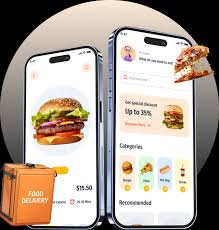The Future of Food: A Comprehensive Guide to Food App Development
In today’s fast-paced world, food app development is becoming increasingly essential for restaurants, delivery services, and food enthusiasts alike. With the rise of on-demand services and the growing reliance on mobile technology, creating an effective food app can help businesses thrive in a competitive market. In this blog post, we’ll explore key considerations, features, and trends in food app development.
Understanding the Market
Before diving into development, it’s crucial to understand the target audience. Are you catering to busy professionals looking for quick meal options, families seeking convenience, or foodies wanting to explore new culinary experiences? Identifying your audience will guide the app’s design and functionality.
Key Market Trends
-
On-Demand Delivery: The convenience of having food delivered to your doorstep has driven the success of apps like Uber Eats and DoorDash. Building a robust delivery system is crucial.
-
Health and Wellness: With an increasing focus on healthy eating, apps that offer nutritious options or meal plans are gaining popularity. Incorporating dietary preferences and restrictions is a must.
-
Sustainability: Eco-friendly practices are on the rise. Features that highlight sustainable sourcing and environmentally friendly packaging can set your app apart.
Essential Features for Your Food App
When developing a food app, certain features can significantly enhance user experience and engagement:
1. User-Friendly Interface
A clean, intuitive design is vital. Users should easily navigate through menus, place orders, and manage their accounts without frustration.
2. Search and Filter Options
Implement robust search functionalities that allow users to filter by cuisine, dietary restrictions, price range, and user ratings.
3. Secure Payment Integration
Safety is paramount. Ensure secure payment gateways and various payment options (credit cards, digital wallets) to provide convenience.
4. Real-Time Order Tracking
Users appreciate knowing the status of their orders. Integrate GPS tracking to keep customers informed of their delivery progress.
5. Reviews and Ratings
Allow users to leave feedback and rate their experiences. This not only builds trust but also helps other users make informed decisions.
6. Push Notifications
Keep users engaged with personalized notifications about special offers, new menu items, or updates on their orders.
7. Loyalty Programs
Encouraging repeat business can be achieved through loyalty programs. Implement reward systems to incentivize regular customers.
Choosing the Right Technology Stack
Selecting the appropriate technology stack is crucial for your app’s success. Consider these options:
- Frontend Development: Technologies like React Native or Flutter can provide a seamless user experience across both iOS and Android platforms.
- Backend Development: Node.js or Ruby on Rails are popular choices for building robust backends that can handle high traffic.
- Database Management: Use databases like MongoDB or PostgreSQL for efficient data management and storage.
Marketing Your Food App
Once your app is developed, effective marketing strategies are essential for attracting users:
1. Social Media Campaigns
Utilize platforms like Instagram and TikTok to showcase your app’s features and menu items. Engaging visuals can draw in potential users.
2. Influencer Collaborations
Partnering with food bloggers and influencers can help spread the word about your app. Their audience trusts their recommendations.
3. SEO and Content Marketing
Optimize your app’s website for search engines. Create valuable content related to food trends, recipes, and health tips to attract organic traffic.
4. App Store Optimization
Ensure your app is easily discoverable in app stores. Use relevant keywords, engaging descriptions, and high-quality screenshots.
Conclusion
Food app development is an exciting and rapidly evolving field. By understanding market trends, incorporating essential features, and implementing effective marketing strategies, you can create a successful food app that meets the needs of modern consumers. As the food industry continues to innovate, staying ahead of trends will be key to your app’s long-term success. Embrace the challenge, and your app could become the next must-have in the culinary world!













